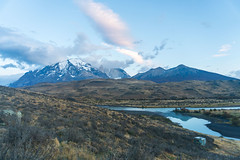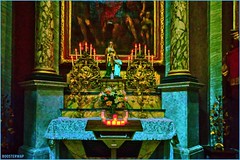Blog Archives
Using “The Simpsons” to Teach Solids
In my Geometry classes, I use the television show “The Simpsons” to teach volume and surface area. In the 10 minute episode titled 3D Homer, Homer goes into a world filled with Geometric solids. In the episode, Patty and Selma visit the Simpson family and Homer, desperate to avoid them, looks behind a bookcase and enters an eerie new world in which everything is in 3D.
The format of this lesson is as follows:
- Have the students watch the 10 minute episode. It is part of their annual Treehouse of Horror Halloween shows (e-mail me if you want the clip). You may want to have student write down math related things they see in the show.
- Discuss the episode and the math topics.
- Have students work in groups (or individually) on the SIMPSONS ACTIVITY WORKSHEET. The tasks of the activity include naming 3D solids in the episode, calculating the height of a pond in the 3D world, and finding the volume, lateral area, and surface area of various solids.
- Discuss and/or collect the activity.
I hope you enjoy the lesson. Please comment below.
Every Student Learned Using iPhones and Evernote.com
 On January 5, 2012, Andy Brown and Julie Mayer taught a 6th grade interactive lesson on volume using manipulatives, an iPhone, and a web based service called Evernote (www.evernote.com). Mr. Brown built a box out of cubes while asking students reflective questions to get them to understand the concept of volume. After the the box was built, a picture was taken using an iPhone and uploaded to an Evernote notebook.
On January 5, 2012, Andy Brown and Julie Mayer taught a 6th grade interactive lesson on volume using manipulatives, an iPhone, and a web based service called Evernote (www.evernote.com). Mr. Brown built a box out of cubes while asking students reflective questions to get them to understand the concept of volume. After the the box was built, a picture was taken using an iPhone and uploaded to an Evernote notebook.
Students were very engaged in this lesson because the picture they saw Mr. Brown take was instantly shown on the SmartBoard in their classroom. Individual students were then assigned dimensions and built boxes of their own out of cubes (see photos below). The iPhone was used again to take photos of their individual boxes and post them to the Evernote notebook. Then, the class had a discussion about the concept of volume and had to calculate how many cubes made the box. Every student was able to discover how to find the volume of a rectangular prism. They are now ready to dig deeper and learn how to show more sophisticated work in the coming days.
Great work students and teachers!

 My name is Andy Maillet and I am an instructional math coach at Athena Middle and High Schools.
My name is Andy Maillet and I am an instructional math coach at Athena Middle and High Schools.



